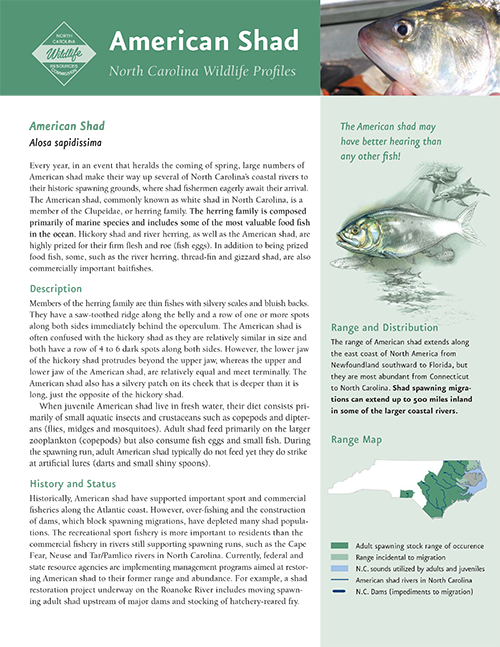Purpose
Students will read a non-fiction article (see list) or Let The Rivers Run Silver Again!, a factual record of how one school helped reintroduce shad (fish) into the Potomac River near Washington D.C. by Sandy Burk. After reading, students will summarize and translate what they learn by creating a science journal entry or other written piece such as an article.
Learning Objectives
- The students will read an age-level appropriate non-fiction book.
- The students will process what they have read and translate this into their own words and pictures.
- Students will be able to give examples of ways that researchers and students in the book impacted the American shad and put them into their own journal entry or article.
Important Note for Teacher Preparation: Decide before this activity how much time or how much reading you want your students to do for this activity. You have a choice of nonfiction articles recommended, articles from the Resources shad readings list and the book Let the River Run Silver Again!.
Duration
Less than one hour for reading a non-fiction article, 2 hours for reading the book.
Materials
List of Nonfiction articles recommended for this activity:
- "Just Keep Swimming"
- "Fish Farming" article on NC shad students
- "Response of American Shad and Striped Bass to Removal of Quaker Neck Dam"
- "Impacts of dam removals on migratory fishes in the Little River, North Carolina"
- "Restoring American Shad on the Roanoke River One Fish at a Time"
- "Shad species profile" North Carolina Wildlife Resources Commission
- "Shad habitat profile" Atlantic States Marine Fisheries Commission
Nonfiction books recommended for this activity:
- Let the River Run Silver Again! by Sandy Burk
- The Founding Fish by John McPhee
Directions
- Have students read their nonfiction articles or Let the River Run Silver Again! and answer the assessment questions that go with the reading assignment (included). After assessments are turned in have students discuss what points interested them from each of their readings.
- Students can summarize the events or facts from their article or the book as a science journal entry for their science journal, as if they are doing this as a scientist entering in background research on American shad for the purposes of studying them.
Special Directions for use of Let the River Run Silver Again!
- This book was written with the help of middle school shad students who helped raise and release American shad. These students were the first to hatch fish eggs in their classroom!
- Explain to students that they are raising American shad too and like the students in the book they will actually make a difference in the health of their river.
- Tell students the basics of the book: shad used to be the most common fish in Potomac river, but they were overfished and river blockages caused the fish to go extinct in some parts of the river system. (graph, p. 32).
- Have students document the book as a journal entry.
Extension Activities
- Students can write their own journal article or magazine article about the shad restoration program in North Carolina, the student shad program in the mid Atlantic, or other topics they discover in their readings.
- Create a mural to depict the ecology of the river where the shad return or migrate to the sea using information from their articles or the rest of the activities. Topics in the mural can include shad and other fish and animals that live in the river, sounds or ocean, types of pollution going into the water, trees along a river bank, etc.


